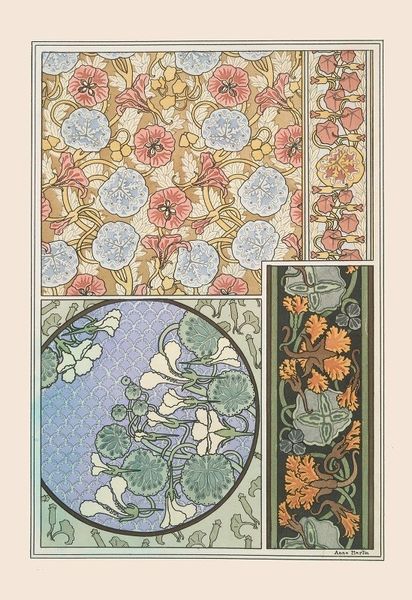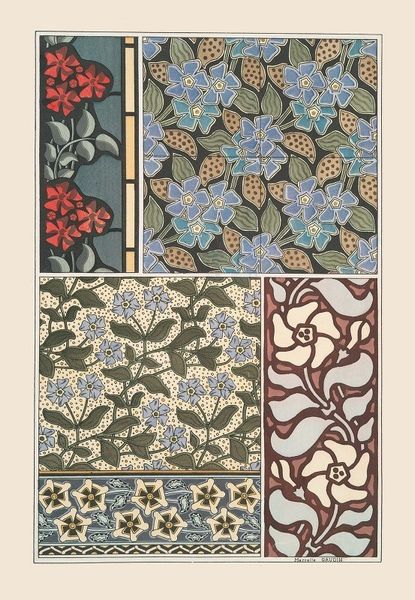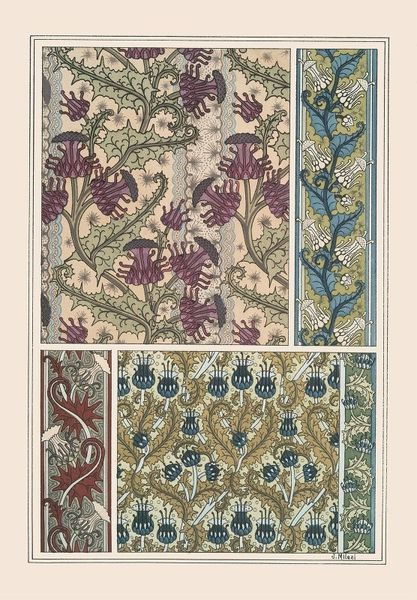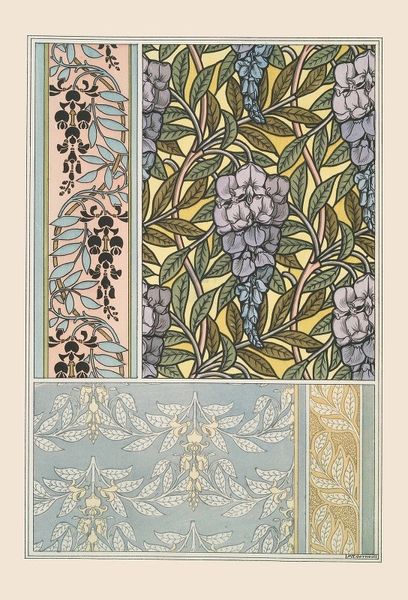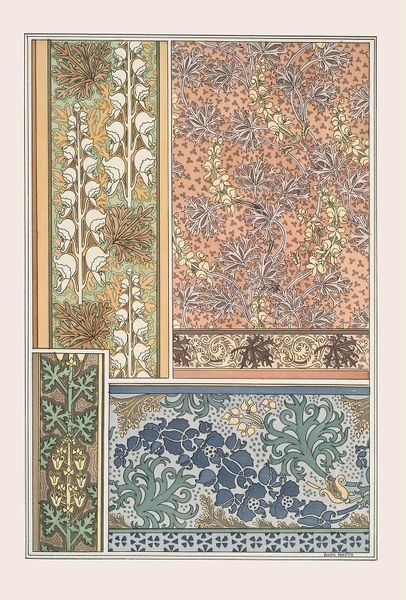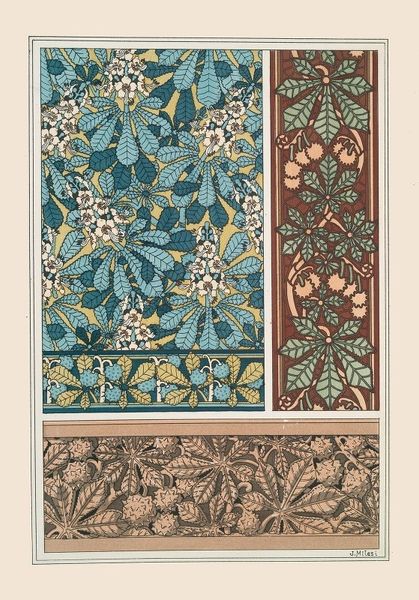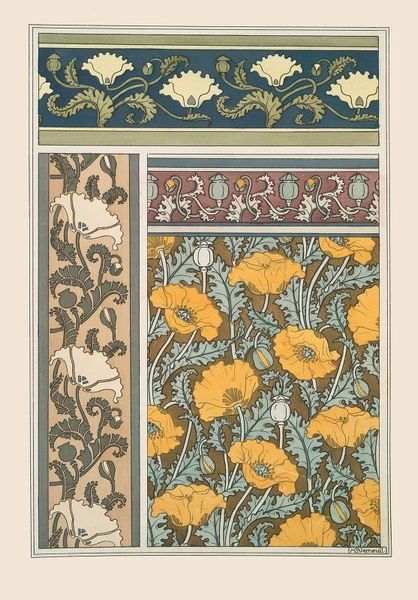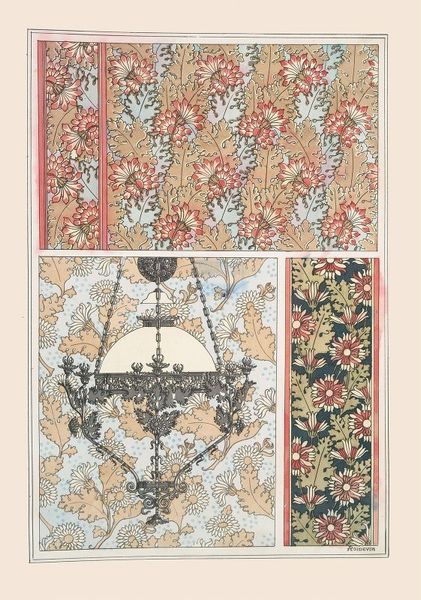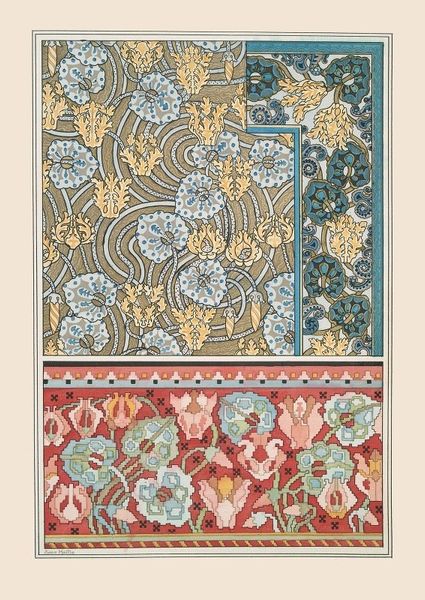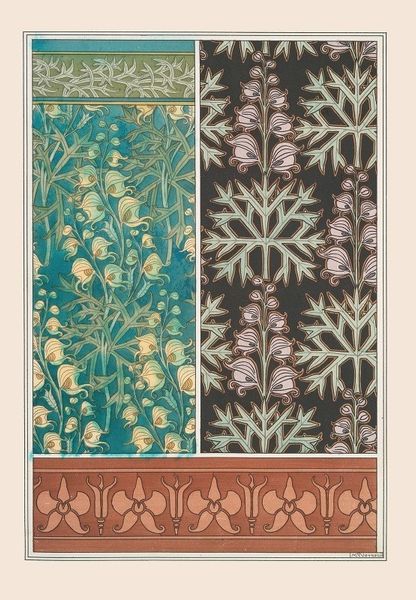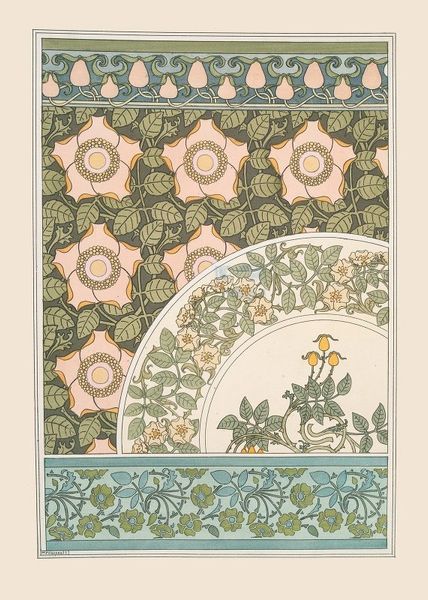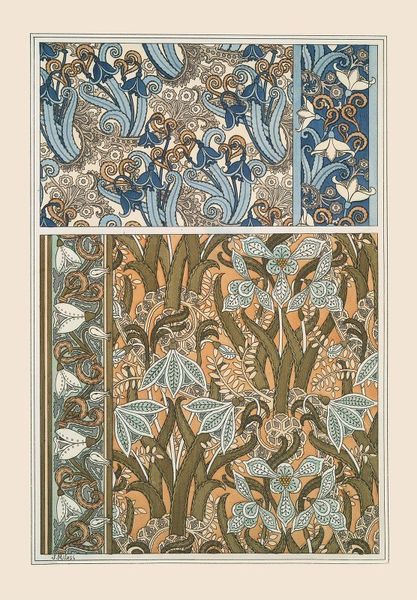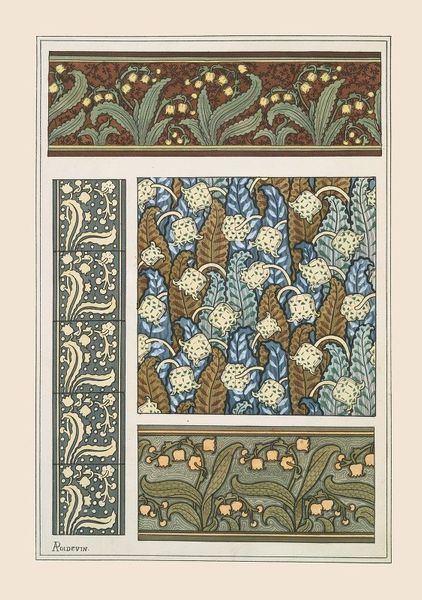
paper
#
art-nouveau
#
paper
#
line
#
decorative-art
Copyright: Public Domain: Artvee
Curator: Well, hello! Look at this, will you? This piece, titled "Bouton d’or 3," dates back to 1896. It's by Maurice Pillard Verneuil, and it's just bursting with decorative charm. What's your first take? Editor: Intricate! Almost hypnotically so. The way the floral patterns interact reminds me of visual music – repetitive, yet with subtle variations. Gives you that Art Nouveau escapism vibe, doesn’t it? Curator: Totally, it's a dizzying dance of golden buttercups. There’s a really deliberate quality in Verneuil's use of line and form. He plays with both geometric structures and those flowing organic shapes typical of Art Nouveau. Notice the vertical panel with those bold, outlined flowers; very linear compared to the softer patterns on the sides. Editor: Right. And these weren’t just aesthetics; this design approach really challenged the industrial drudgery of the late 19th century. Artists like Verneuil created these intricate pieces almost as acts of resistance, advocating for beauty in everyday life for everyone. The very core of the Arts and Crafts Movement. Curator: You see the book cover illustration, too? Against this sort of dark indigo background. The color alone shifts its emotional register from, say, wallpaper, into something more intimate...more akin to literature. It also reminds me a bit of those pre-Raphaelite paintings, you know, how the color saturates the image with meaning. Editor: Indeed, but within a broader context of imperial visual culture. Consider how readily these patterns could become symbols co-opted into commercial schemes across empires. Still, Verneuil was undeniably pushing for art for the masses. Curator: I agree. There is something lovely about making accessible and appealing designs in order to combat that capitalist, late 19th century malaise. The intention behind "Bouton d’Or 3", that spark of hope for an accessible utopia. Editor: Absolutely. Though one could interrogate the romantic, even naive vision behind this aim, Verneuil tapped into art’s capacity to ignite collective imaginations. Curator: A utopian whisper, a hopeful yell--or perhaps even a pattern repeated often enough. So much more than simply 'decorative,' wouldn't you agree? Editor: Yes. Definitely much more. A tiny portal into a bygone debate of art, society and power!
Comments
No comments
Be the first to comment and join the conversation on the ultimate creative platform.
